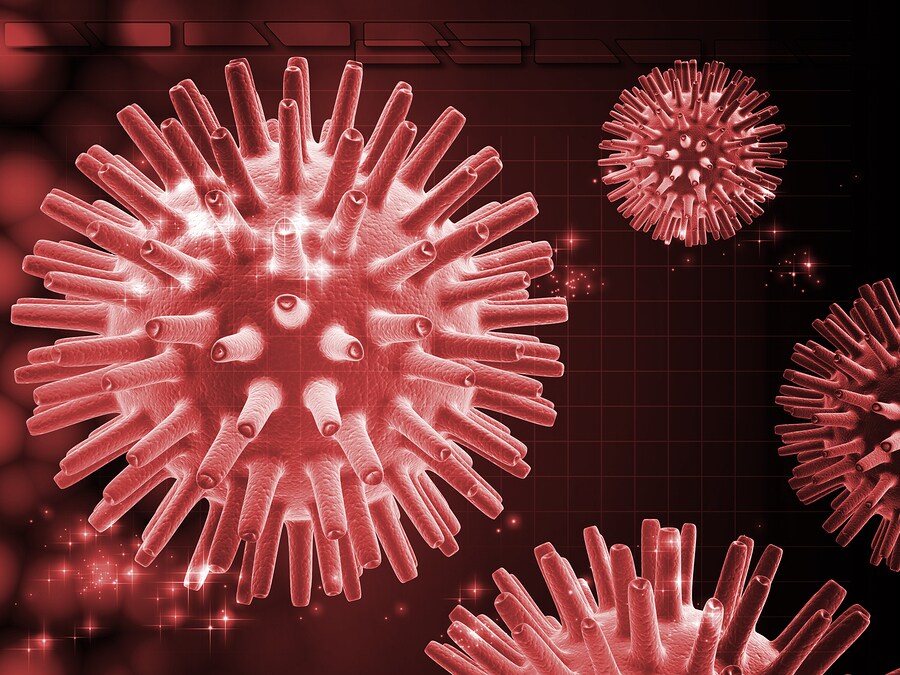
Herpes Virus
For their experiments, Bell et al. obtained a macrophage cell line derived from C56/BL6 mice. SDS-PAGE was performed followed by an in-gel trypsin digest in preparation for high resolution mass spectrometry. LC/MS/MS was performed on an LTQ-Orbitrap XL mass spectrometer (Thermo Scientific) coupled to a Jupiter reversed phase nano-LC column (Phenomex).
Based on the MS/MS spectra obtained, proteins were identified through database searches from the Mascot and Uniprot databases. In comparison with a previous proteomic analysis,4 the Bell group identified 67 out of the predicted 82 proteins, with at least 2 unique peptides discovered. These totals included HSV1 structural proteins consisting of capsid proteins (91%) and tegument proteins (96%) but only 79% consisting of envelope proteins. Envelope proteins are notoriously difficult to identify using MS, due to their association with the membrane and their tendency to be highly hydrophobic.
MS analysis also revealed 90 novel phosphorylation and 10 novel ubiquitylation sites identified on HSV1 proteins. Phosphorylated proteins were generally localized to the nucleus and were involved in DNA replication and transport in and out of the nucleus. The ubiquitylation of the proteins pUL22, pUL27 and pUL1 suggest that ubiquitylation might function to regulate membrane trafficking or be a signal for proteasomal degradation.
DNA inhibition experiments of cultured HSV1 cells treated with the inhibitors acyclovir and PAA revealed both DNA inhibitors reduced protein level abundance and protein modifications; however, PAA treatment affected a greater range of proteins than acyclovir.
This work will likely serve as a launch pad for future studies targeted at investigating HSV1 translocation and its regulation by ubiquitylation and phosphorylation. Analysis of infected cells at different time points will also be important in elucidating how HSV1 proteins are transported.
References
1. Klapper, P.E., and Cleator, G.M. (1997) “Herpes Simplex Virus,” Intervirology, 40(2−3) (pp. 62−71).
2. Roizman, B., and Campadelli-Fiume, G. (2007) “Alphaherpes viral genes and their functions,” in Human Herpesviruses: Biology, Therapy, and Immunoprophylaxis, Cambridge University Press, Chapter 7.
3. Bell, C. et al. (2013) “Proteomics Analysis of Herpes Simplex Virus Type 1-Infected Cells Reveals Dynamic Changes of Viral Protein Expression, Ubiquitylation, and Phosphorylation,” Journal of Proteome Research, published online Mar 4, 2013 [Epub ahead of print], doi: 10.1021/pr301157j.
4. Loret, S., Guay, G., and Lippe, R. (2008) “Comprehensive characterization of ́extracellular herpes simplex virus type 1 virions,” Journal of Virology, 82(17) (pp. 8605−8618).
Leave a Reply